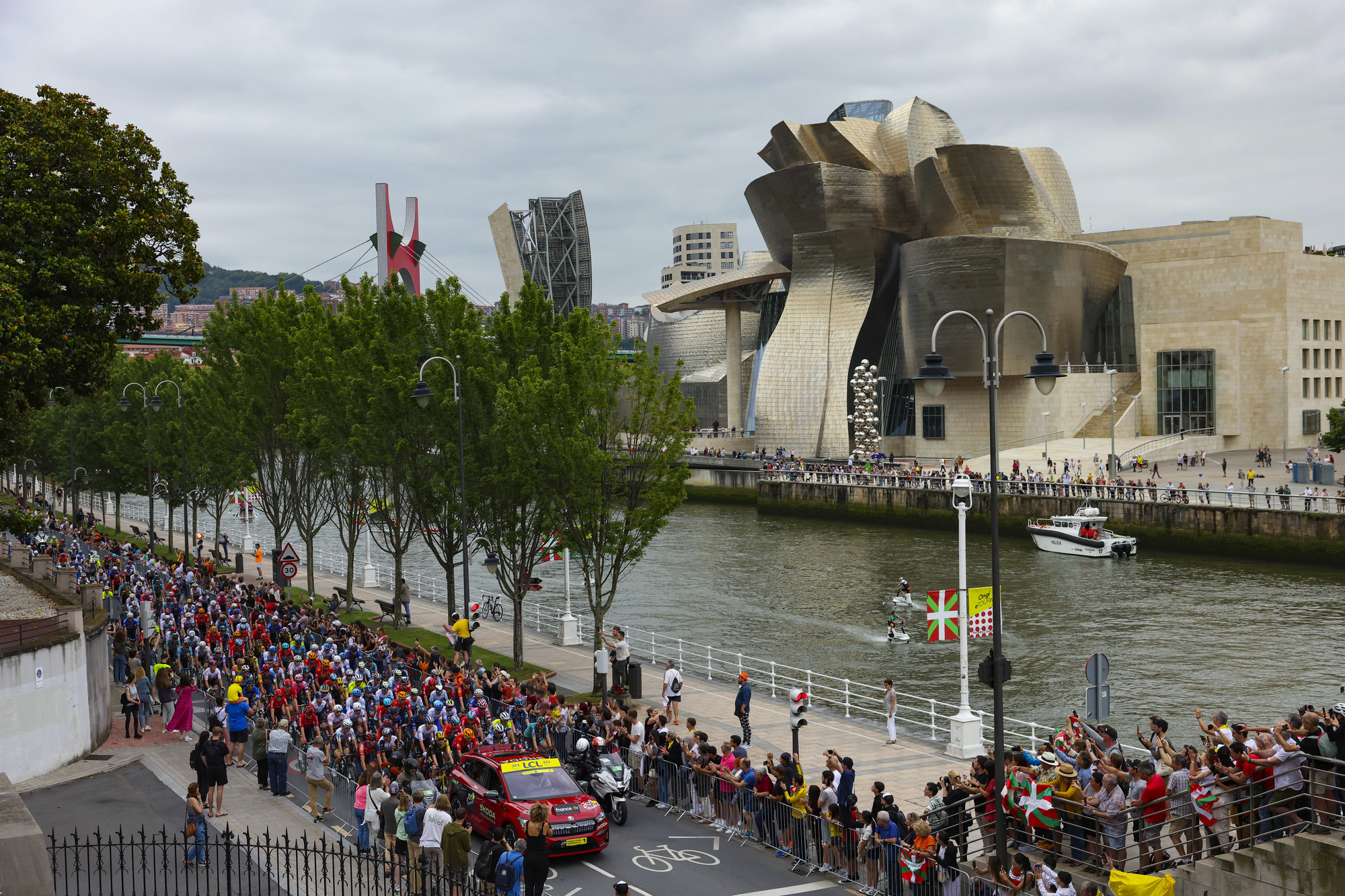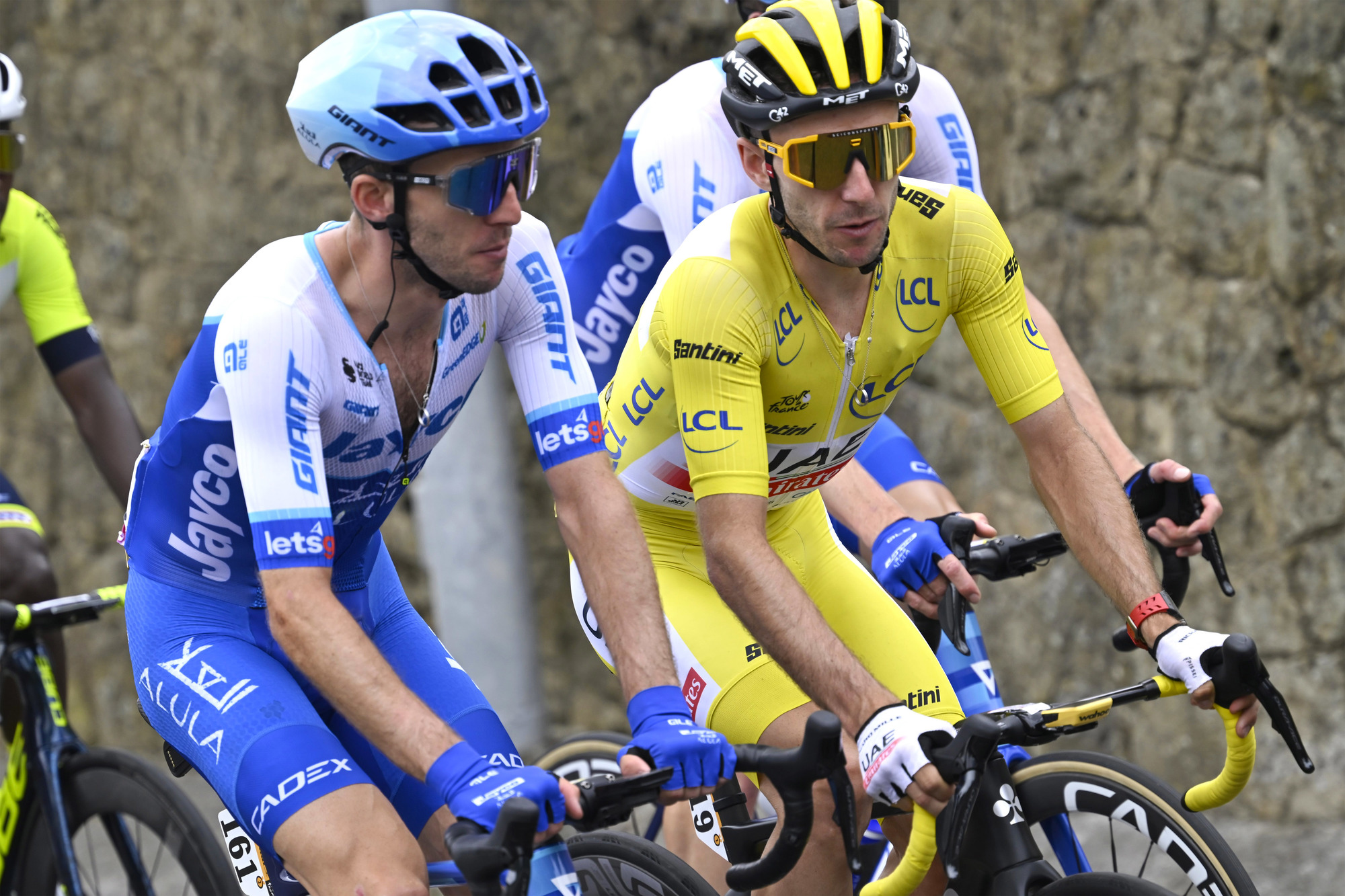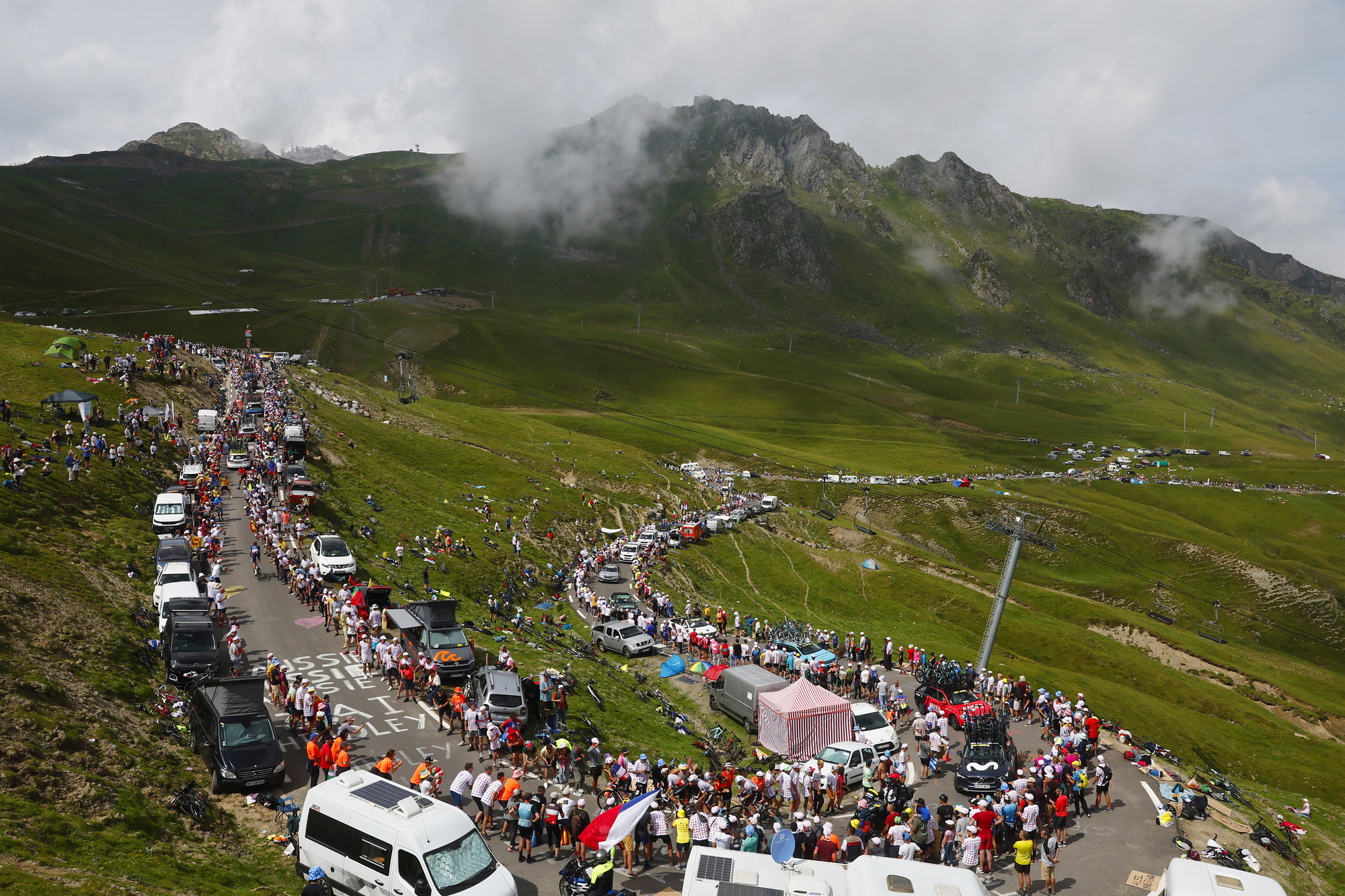- Ciclismo
- 1066 views
Le Grand Départ
Basque Country
When they say that it always rains in Bilbao, they might be right. They are probably even more right when they say that the Basques have an almost visceral connection with cycling. Their flag is practically omnipresent during the season, and now that the Tour de France has come to them, they are everywhere. The deep yellow of the race blends with the futuristic titanium grey of the Guggenheim Museum, while the giant spider watches over the riders at the start.
It looks like a movie, but it's cycling.

Brothers in crime
Bilbao
A breakaway on the final climb is the perfect setting for a firework first stage. This is where Adam and Simon Yates fly away, different in the team, twins in life. A challenge that would see them face each other in the final eight kilometres. Adam wins and takes the first yellow jersey of the Tour de France, but it's a family celebration where everything is a gift.
.jpg)

Eskerrik Asko
Amorebieta-Etxano - Bayonne
When a race crosses a border, two peoples meet, flag by flag, united by a burning passion that makes them travel the world in search of a climb to cheer and dream about. Sharing the road makes everyone brothers, from one country to another, cycling continues to flow like blood in a vein.
 .jpg)

Where the wind whispers of legendary days
Cauterets-Cambasque
Gloomy and fascinating, the Pyrenees are the shadow side of the Tour. On these melancholic peaks, where darkness and light alternate, the legendary pages of the French race have been written and champions have won, or lost, fighting the wind. Beauty has a different face here: it mixes tears, fatigue and effort in an ancient romantic drama where nature and riders confront each other.
Here, it only takes one sprint to find yourself in the midst of the madness that cycling is: euphoria, heartbeat, glory.
The sleeping volcano
Puy de Dôme
Forever associated with the figure of Raymond Poulidor, this is a very different place from that July in 1964. Now, since the turn of the millennium, a cogwheel train takes people to the summit, winding the mountain bend by bend, the road having no hairpin bends, even more surreal to climb. Now the riders are alone on the final kilometres, the silence of the mountain telling of how hard cycling can be these days when the history of the Tour de France makes them feel small among the stars of the firmament. But even a small light can have a big day, one like this, where the fighting spirit of Pou Pou flies over the peaks of this resting volcano.
.jpg)
How to tackle the first week of TDF - advice from Paolo Bettini
Technical tips
The stages of the first week of the Tour de France were characterised by undulating routes and some major climbs, which also require mountain gear ratios, especially for the two demanding stages in the Pyrenees.
For such a course the bikes are usually fitted with a compact crankset with 36 teeth at the front and scaled gears up to 30-32 at the rear. On the more technically demanding routes, including the toughest descents, particular attention has been paid to the tyres, with a 30-32 range being preferred.
Inflation, on the other hand, depends very much on the type of tyre. Tubeless tyres tend to require a pressure of 4.5-5 bar, while fine tubulars should be inflated to 7-7.5 bar. However, this is all very subjective and depends on the athlete's riding style and sensitivity.
Clothing and accessories
The high temperatures of this time of year certainly call for clothing that is as breathable as possible to wick away perspiration, and preferably light-coloured. Wearing cooled jackets before the start to reduce body temperature is a very common and effective technique.
To protect yourself from possible rain and on long descents, it is important to have a weatherproof jacket with you at all times. Being able to protect yourself and maintain a body temperature that is appropriate to your level of exertion is necessary in order to continue on the demanding route and avoid stress to your body.
Well-ventilated helmets, good quality sunglasses to protect against UV rays and gloves are essential to enjoy the ride to the fullest.
Comfortable and ventilated shoes are certainly an added value for a successful ride.
Hydration and nutrition
As the body is about 65% water, having it available when cycling is extremely important. In order to maintain the body's ability to function, regular drinking is necessary to replace the loss of fluid through perspiration, which is the body's means of thermoregulation.
Drinking before setting off is therefore very important, as is maintaining hydration during activity. A good and important rule of thumb is to carry two bottles, one with fresh water - which can also be used to cool the head and neck if necessary - and the other with specific supplements.
As far as food is concerned, it is important to avoid heavy foods that slow down digestion and to eat fruit and vegetables, which are rich in water, vitamins and minerals.
Sun protection
Although not directly related to performance, it is important to maintain the health of your skin by using sunscreens with a medium to high protection factor.


 Italiano
Italiano English
English